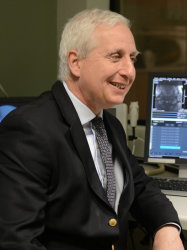BibTex format
@inproceedings{Yang:2017:10.1007/978-3-319-60964-5_17,
author = {Yang, G and Zhuang, X and Khan, H and Haldar, S and Nyktari, E and Ye, X and Slabaugh, G and Wong, T and Mohiaddin, R and Keegan, J and Firmin, D},
doi = {10.1007/978-3-319-60964-5_17},
pages = {195--206},
publisher = {Springer},
title = {Segmenting atrial fibrosis from late gadolinium-enhanced cardiac MRI by deep-learned features with stacked sparse auto-encoders},
url = {http://dx.doi.org/10.1007/978-3-319-60964-5_17},
year = {2017}
}

